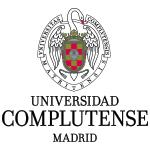Alpha- and gammaherpesviruses in stranded striped dolphins (Stenella coeruleoalba) from Spain: first molecular detection of gammaherpesvirus infection in central nervous system of odontocetes
Investigation published in BMC Veterinary Research
August 12nd, 2020
Background: Herpesvirus infections in cetaceans have always been attributed to the Alphaherpesvirinae and Gammaherpesvirinae subfamilies. To date, gammaherpesviruses have not been reported in the central nervous system of odontocetes.
Case presentation: A mass stranding of 14 striped dolphins (Stenella coeruleoalba) occurred in Cantabria (Spain) on 18th May 2019. Tissue samples were collected and tested for herpesvirus using nested polymerase chain reaction (PCR), and for cetacean morbillivirus using reverse transcription-PCR. Cetacean morbillivirus was not detected in any of the animals, while gammaherpesvirus was detected in nine male and one female dolphins. Three of these males were coinfected by alphaherpesviruses. Alphaherpesvirus sequences were detected in the cerebrum, spinal cord and tracheobronchial lymph node, while gammaherpesvirus sequences were detected in the cerebrum, cerebellum, spinal cord, pharyngeal tonsils, mesenteric lymph node, tracheobronchial lymph node, lung, skin and penile mucosa. Macroscopic and histopathological post-mortem examinations did not unveil the potential cause of the mass stranding event or any evidence of severe infectious disease in the dolphins. The only observed lesions that may be associated with herpesvirus were three cases of balanitis and one penile papilloma.
Conclusions: To the authors` knowledge, this is the first report of gammaherpesvirus infection in the central nervous system of odontocete cetaceans. This raises new questions for future studies about how gammaherpesviruses reach the central nervous system and how infection manifests clinically.
Keywords: Cantabrian Sea; Central nervous system; Cetacean morbillivirus; Cetaceans; Gammaherpesvirus; Herpesvirus; Mass stranding; Striped dolphin
Vargas-Castro I., Crespo JL., Rivera B., Sanchez R., Marco-Cabedo V., Jimenez MA., Fayos M., Serdio A., Garcia-Parraga D. and Sanchez-Vizcaino JM..
 | Servicio de Inmunología Viral y Medicina Preventiva (SUAT). Centro de Vigilancia Sanitaria Veterinaria (VISAVET). Universidad Complutense (UCM). |
 | Departamento de Sanidad Animal. Facultad de Veterinaria. Universidad Complutense (UCM). |
 | Oceanogràfic. Ciudad de las Artes y las Ciencias. Generalitat Valenciana. |
 | Departamento de Medicina y Cirugía Animal. Facultad de Veterinaria. Universidad Complutense (UCM). |
| Centro de Recuperación de Fauna Silvestre de Cantabria. | |
| Empresa de Tecnologías y Servicios Agrarios, S.A. (TRAGSATEC). Grupo Tragsa. | |
| Dirección General de Biodiversidad. Consejería Medio Ambiente y Cambio Climático. Gobierno de Cantabria. | |
